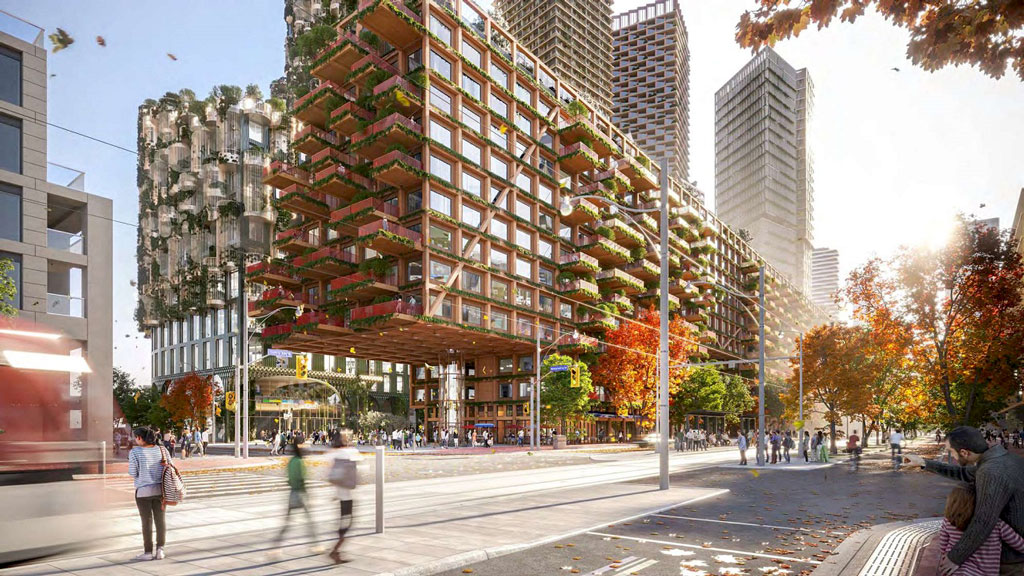Construction starts on Durham-Scarborough Bus Rapid Transit system in Ajax – constructconnect.com

Project Overview and Contribution to Sustainable Development
Alignment with SDG 11: Sustainable Cities and Communities
Construction has commenced on the first segment of the Durham-Scarborough Bus Rapid Transit (BRT) system, a critical infrastructure project designed to advance United Nations Sustainable Development Goal 11. By creating safe, affordable, accessible, and sustainable transport systems, this initiative directly addresses Target 11.2. The project, located along Kingston Road (Highway 2) in Ajax, will establish a more integrated and sustainable urban environment.
Key features contributing to this goal include:
- Two-way transit service with a projected frequency of every five minutes.
- Dedicated median bus-only lanes and priority signals to reduce transit travel times by an anticipated 20 minutes.
- Construction of dedicated in-boulevard cycle tracks and sidewalks with accessibility improvements, promoting active and inclusive mobility.
Supporting Infrastructure, Climate Action, and Economic Growth (SDGs 9, 13, 8)
The BRT system represents a significant investment in resilient infrastructure (SDG 9), designed to support long-term economic development and community well-being. By providing an efficient alternative to private vehicles, the project is a key measure for climate action (SDG 13), aimed at reducing greenhouse gas emissions within the corridor. Furthermore, the development fosters decent work and economic growth (SDG 8) by creating construction jobs and improving residents’ access to employment opportunities throughout the region.
Phase One Construction Details
Scope of Work and Timeline
The initial phase of construction is focused on the segment from approximately 300 metres west of Harwood Avenue to Galea Drive in the Town of Ajax. This stage has an expected duration of 18 months, with completion scheduled for the end of 2026.
The scope of work for this segment includes:
- Construction of dedicated median bus lanes.
- Installation of median transit stop platforms and shelters.
- Comprehensive road reconstruction and installation of new traffic signals optimized for bus movements.
- Upgrades to subterranean infrastructure, including watermain and sanitary sewer installation.
- Enhancements to the public realm through street lighting and landscaping.
Project Funding and Collaborative Governance (SDG 17)
Demonstrating a commitment to SDG 17 (Partnerships for the Goals), the project is enabled by a joint investment through the Investing in Canada Infrastructure Program. This multi-level governmental partnership involves a financial collaboration between the Government of Canada, the Government of Ontario, and the Regional Municipality of Durham, showcasing an effective model for financing and implementing sustainable infrastructure projects.
Analysis of Sustainable Development Goals (SDGs) in the Article
-
Which SDGs are addressed or connected to the issues highlighted in the article?
The article on the Durham-Scarborough Bus Rapid Transit (BRT) project addresses several Sustainable Development Goals (SDGs) through its focus on infrastructure development, sustainable transportation, and community well-being.
- SDG 9: Industry, Innovation and Infrastructure: The core of the article is the construction of new public infrastructure—the BRT system. This includes building dedicated bus lanes, roads, and transit stops, which directly relates to developing quality, reliable, and sustainable infrastructure.
- SDG 11: Sustainable Cities and Communities: The project aims to create a more sustainable urban environment by improving public transportation. By providing a frequent and efficient bus service, it offers a sustainable alternative to private vehicles, which is a key component of making cities more inclusive, safe, resilient, and sustainable.
- SDG 3: Good Health and Well-being: The project incorporates elements that promote health and safety. The inclusion of “dedicated in-boulevard cycle tracks” encourages physical activity. Furthermore, features like “dedicated median bus lanes” and “priority signals” are designed to improve road safety and potentially reduce traffic-related accidents.
-
What specific targets under those SDGs can be identified based on the article’s content?
Based on the project details, specific SDG targets can be identified:
- Target 9.1: “Develop quality, reliable, sustainable and resilient infrastructure… with a focus on affordable and equitable access for all.” The construction of the BRT system, with its dedicated lanes, new roads, and accessibility features, is a direct effort to develop sustainable and resilient transport infrastructure to support the community.
- Target 11.2: “By 2030, provide access to safe, affordable, accessible and sustainable transport systems for all, improving road safety, notably by expanding public transport…” The article explicitly details the expansion of public transport with the BRT system. It mentions features aimed at safety (“priority signals”), accessibility (“sidewalks with accessibility improvements”), and sustainability (“dedicated median bus lanes”).
- Target 11.7: “By 2030, provide universal access to safe, inclusive and accessible, green and public spaces…” The construction of “dedicated in-boulevard cycle tracks” and improved sidewalks contributes to this target by creating safe and accessible public spaces for recreation and active transport.
-
Are there any indicators mentioned or implied in the article that can be used to measure progress towards the identified targets?
The article provides several direct and implied indicators for measuring progress:
-
For Target 11.2 (Access to sustainable transport): A key indicator is the “Proportion of population that has convenient access to public transport” (Indicator 11.2.1). The article provides specific metrics that measure convenience and efficiency:
- Service frequency: “two-way transit service every five minutes.”
- Time savings: “anticipated time savings of 20 minutes for transit trips.”
- Physical infrastructure for access: The “construction of… median transit stop platforms and shelters” and “sidewalks with accessibility improvements” serve as physical indicators of improved access.
- For Target 9.1 (Development of sustainable infrastructure): The project itself—the “construction of dedicated median bus lanes,” “road reconstruction,” and installation of “watermain and sanitary sewer”—serves as a tangible indicator of investment in and development of new, sustainable infrastructure.
- For Target 11.7 (Access to public spaces): The length and coverage of the “dedicated in-boulevard cycle tracks” and improved sidewalks would be a direct indicator of progress towards providing access to safe public spaces for active mobility.
-
For Target 11.2 (Access to sustainable transport): A key indicator is the “Proportion of population that has convenient access to public transport” (Indicator 11.2.1). The article provides specific metrics that measure convenience and efficiency:
-
Create a table with three columns titled ‘SDGs, Targets and Indicators’ to present the findings from analyzing the article.
SDGs Targets Indicators (Mentioned or Implied in the Article) SDG 9: Industry, Innovation and Infrastructure 9.1: Develop quality, reliable, sustainable and resilient infrastructure. - Construction of dedicated median bus lanes and transit stop platforms.
- Road reconstruction and installation of new traffic signals.
- Installation of watermain and sanitary sewer systems.
SDG 11: Sustainable Cities and Communities 11.2: Provide access to safe, affordable, accessible and sustainable transport systems for all. - Service frequency of every five minutes.
- Anticipated time savings of 20 minutes per trip.
- Construction of sidewalks with accessibility improvements.
- Implementation of priority signals to improve safety and efficiency.
SDG 11: Sustainable Cities and Communities 11.7: Provide universal access to safe, inclusive and accessible, green and public spaces. - Construction of dedicated in-boulevard cycle tracks.
- Creation of sidewalks with accessibility improvements.
SDG 3: Good Health and Well-being 3.6: Halve the number of global deaths and injuries from road traffic accidents. - Implementation of dedicated bus-only lanes to separate traffic.
- Installation of traffic signals with bus priority movements.
Source: canada.constructconnect.com

What is Your Reaction?
 Like
0
Like
0
 Dislike
0
Dislike
0
 Love
0
Love
0
 Funny
0
Funny
0
 Angry
0
Angry
0
 Sad
0
Sad
0
 Wow
0
Wow
0



























;Resize=805#)


















































